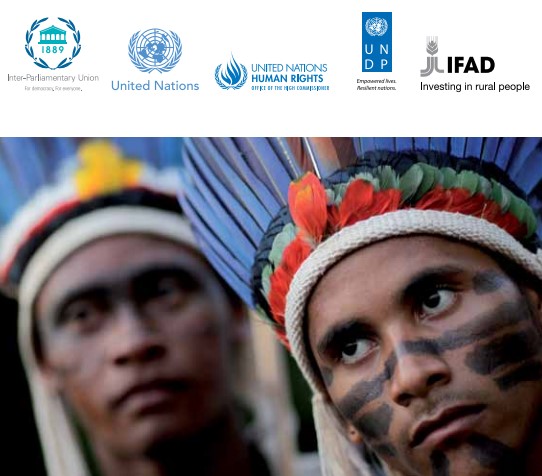People who belong to multiple marginalized populations may face unique human rights challenges specific to the intersections among these marginalized identities. In order to fully protect the human rights of indigenous peoples with disabilities, parliamentarians will need to consider how to implement the United Nations Declaration on the Rights of Indigenous Peoples (UNDRIP) in conjunction with the Convention on the Rights of Persons with Disabilities (CRPD).
This handbook on implementing the UNDRIP is meant to help parliamentarians better understand the human rights of indigenous people as described in the UNDRIP. It provides:
- Checklists that parliamentarians can use to assess their engagement with indigenous people’s rights
- Examples of how the UNDRIP has been implemented at the national and local levels
- Important focal areas of human rights for indigenous people including the right to participate in decision making, land rights, rights to culture, and others
The handbook mentions indigenous people with disabilities a few times. This includes in the text for paragraph 2, Article 21 in the UNDRIP, which calls upon states to pay “special attention” to the ” rights and special needs of indigenous elders, women, youth, children and persons with disabilities”.
This publication is co-published by the Inter-Parliamentary Union, the United Nations – specifically, the Department for Economic and Social Affairs/Division for Social Policy and Development/Secretariat of the Permanent Forum on Indigenous Issues, and the Office of the High Commissioner for Human Rights – the United Nations Development Programme, and the International Fund for Agricultural Development.


